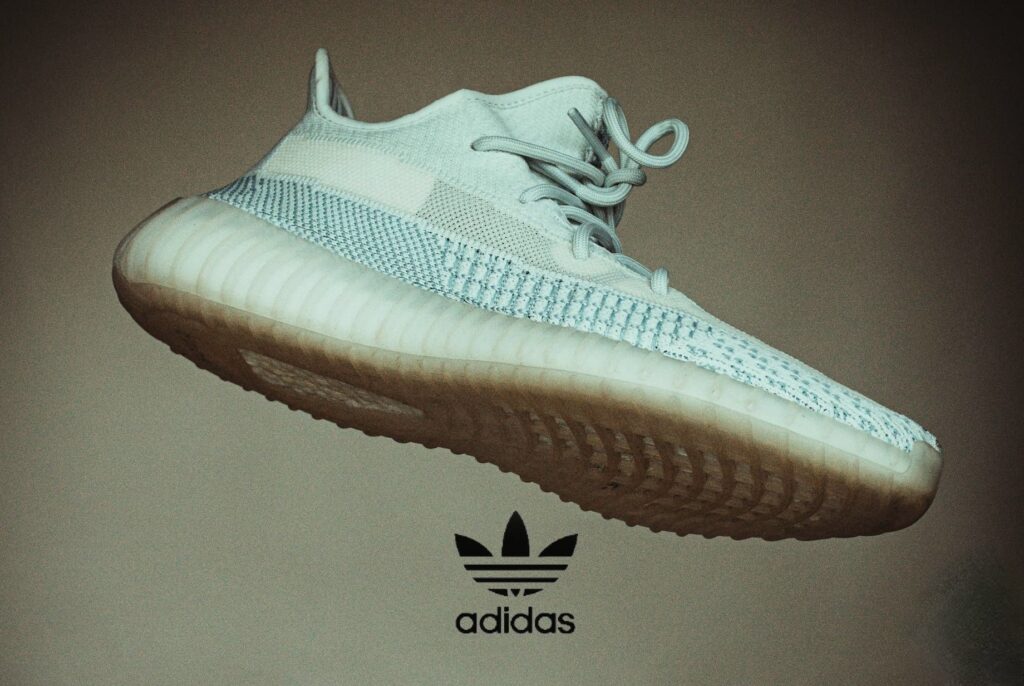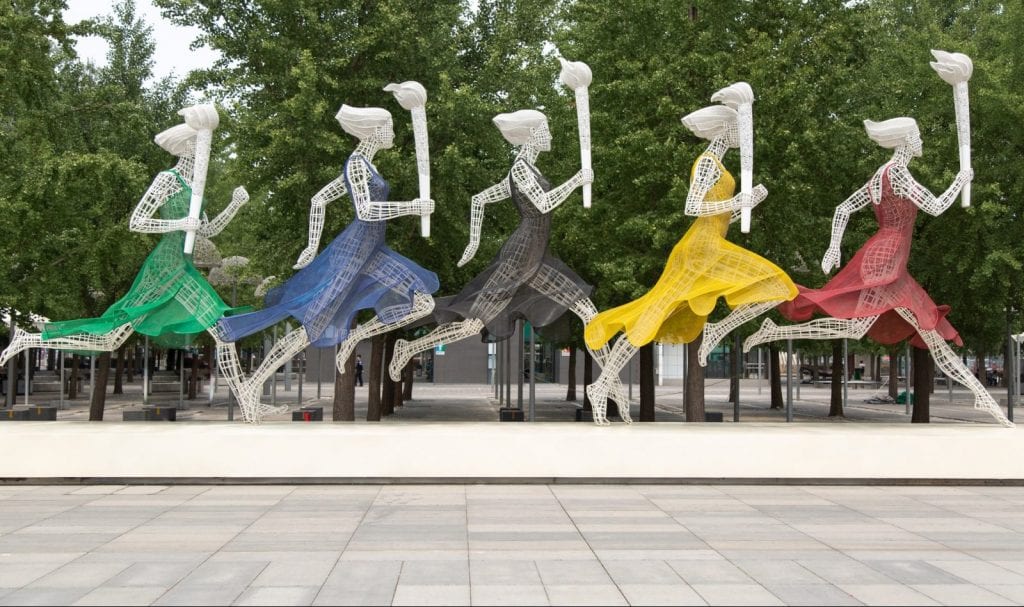Adidas is looking to beat the “opportunistic” securities fraud lawsuit waged against it by a shareholder over its now-defunct partnership with Kanye West. In a February 2 motion to dismiss, adidas argues that the HRSA-ILA Funds-initiated lawsuit is “a misguided attempt to transform the dramatic and unfortunate end of the commercial partnership” between it and Ye (formerly Kanye West) into a claim for securities fraud. Against the background of the breakdown of the Yeezy partnership, adidas argues that HRSA-ILA asserts that “earlier statements by adidas – primarily broad, robust risk disclosures and expressions of its commitment to diversity and inclusion – were somehow fraudulent.” The problem with that, according to adidas, is that not only do federal securities laws “not permit such claims of ‘fraud by hindsight,’” HRSA-ILA fails to plead the core elements of a securities fraud claim, and thus, the lawsuit should be tossed out of court.
Some Background: HRSA-ILA filed suit against adidas AG, its chief financial officer Harm Ohlmeyer, and former chief executive officer Kasper Rorsted (collectively, the “defendants” or “adidas”) in April 2023, accusing them of making “materially false and/or misleading” statements in connection with the Yeezy partnership that it entered into with Ye back in 2013 and that carried on until it was terminated by adidas in October 2022. According to HRSA-ILA, the defendants ran afoul of the Securities Exchange Act by “misrepresent[ing] and fail[ing] to disclose … adverse facts pertaining to the company’s business,” namely, the risks associated with its once-very-lucrative Yeezy deal, thereby, inflating adidas’ stock price.
Setting the stage in its motion to dismiss, adidas states that following its termination of the partnership with Ye, HRSA-ILA filed this lawsuit, asserting claims under Section 10(b) of the Securities Exchange Act of 1934, which prohibits the use of any “device, scheme, or artifice to defraud” and imposes liability (via Rule 10b-5) for any misstatement or omission of a material fact regarding a security. At a high level, adidas argues that HRSA-ILA fails to plead that any of the alleged misstatements are false or misleading; that the facts give rise to a strong inference of intent to defraud; and that there is loss causation. (These are the three elements necessary to stating a claim under Section 10(b).)
False or Misleading Statements – The defendants first focus on their allegedly false or misleading statements, namely, (1) adidas’s warnings regarding Business Partner Risk, Personnel Risk, and Media Risk; (2) Mr. Rørsted’s responses to Ye’s 2018 statement regarding slavery; and (3) adidas’s expressions of its commitment to diversity and inclusion, anti-harassment, and sustainability. Instead of pleading that the statements that fall into these three categories are false or misleading, adidas argues that in its complaint, HRSA-ILA “merely recites a long list of public statements … and repeats the exact same boilerplate language as to why all of those statements are supposedly ‘false and/or misleading.’” To the extent that it does identy alleged misstatements, adidas argues that the comments “are not actionable under the securities laws.”
Specifically, adidas takes issue with each of the alleged categories of false or misleading statements …
> Adidas’ Risk Disclosures Are Not False or Misleading: Adidas claims that the HRSA-ILA’s attempt to base a securities fraud claim on its risk disclosures – statements consistently made over a four-year period that warned investors of various potential business issues, including “exactly what occurred with Ye in 2022” – “makes no sense and has no basis in the law.” In fact, adidas asserts that its “robust disclosures … cautioned investors about numerous risks that could impact the Company’s performance, including Business Partner Risk, Personnel Risk, and Media and Stakeholder Risk.” In particular, adidas argues that its disclosure regarding Business Partner Risk “warned investors of precisely the type of occurrence that Plaintiff alleges regarding Ye in the fall of 2022.”
> Mr. Rørsted’s Statements Are Not False or Misleading: HRSA-ILA “identifies nothing that is false or misleading about Mr. Rørsted’s comments regarding Ye’s highly offensive May 2018 statement that ‘slavery . . . sounds like a choice’ for enslaved individuals,” per adidas, which claims that Mr. Rørsted stated that, although Ye “has been and is a very important part of our strategy and has been a fantastic creator,” there “clearly are some comments we don’t support,” which is true and in line with adidas’ position.
> Adidas’ Statements Concerning Commitment to Diversity and Inclusion Are Not Actionable Under the Securities Laws: None of adidas’s statements expressing its commitment to the values of diversity and inclusion “can form the basis of a claim for securities fraud,” the defendants contend, as such statements consist of “(i) broad aspirational statements that, under the securities laws, are considered inactionable ‘puffery,’ and (ii) true statements of historical fact regarding adidas’s efforts to promote diversity and inclusion.” And beyond that, those statements “do not represent that Ye, or any other business partner, had always acted in a manner consistent with adidas’s diversity, inclusion, and anti-harassment goals.”
It is worth noting … that adidas addresses’ HRSA-ILA’s argument that adidas failed to meet its disclosure obligations under the European Union’s Non-Financial Reporting Directive (“NFRD”) – which requires large entities (such as adidas) to publicly disclose non-financial information, including material risks related to their business relationships and how companies manage those risks – and the voluntary Global Reporting Initiative (“GRI”). Unable to identify any false or misleading statements, adidas says that HRSA-ILA “asserts – incorrectly – that the NFRD and the GRI’s guidelines imposed a duty [on it] to disclose Ye’s prior incidents of misconduct.” Shutting down HRSA-ILA’s argument, adidas states that “no court has held that the provisions cited by [HRSA-ILA] give rise to disclosure obligations that are actionable under the federal securities laws.” And, in any event, “neither framework requires adherents to identify specific incidents of misconduct, by business partners or otherwise.”
Even still, adidas says that its Annual Reports “easily satisfied the NFRD requirements and GRI guidelines by providing in their ‘Risk and Opportunity’ sections (and elsewhere throughout each Annual Report) both detailed explanations of various risk categories, and the steps taken to mitigate each of those risks.”
Scienter – In addition to failing to plead that any of the defendants’ statements are false or misleading, adidas argues that HRSA-ILA “falls far short” of the requirement that it “state with particularity facts giving rise to a strong inference that the defendant acted with the required state of mind,” – i.e., that adidas “made false or misleading statements either intentionally or with deliberate recklessness.” On this point, adidas argues that HRSA-ILA’s allegations “do not give rise to a strong inference of fraudulent intent, [and] rather, the opposing inference – that adidas did not know in advance that Ye would take actions requiring the termination of the adidas-Yeezy partnership – is far more compelling.”
Among other things, the defendants maintain that HRSA-ILA “relies almost entirely on adidas’s alleged knowledge of discrete incidents of misconduct during 2013 through 2018 – a full four years before Ye’s conduct that led to the termination of the partnership.” At the same time, HRSA-ILA also acknowledges that “adidas took Ye’s conduct during 2013 to 2018 seriously,” with adidas executives meeting in 2018, for example, “to determine whether and how the Company should proceed with the partnership.”
Loss Causation – Finally, having failed to plead actionable misrepresentation or scienter, adidas says that “it comes as no surprise that [HRSA-ILA] also fails to plead loss causation – i.e., that the decline in adidas’s stock price was ‘proximately caused by a revelation of fraudulent activity’ rather than other events or information.”
None of the statements that HRSA-ILA cites as allegedly causing a decline in stock price – including Ye’s October 2022 statements on a podcast, in which he complaint about the “Jewish media” and boasted that he “can literally say anti-Semitic shit, and [adidas] can’t drop me”; a November 2022 Wall Street Journal article reporting that, in 2018, adidas executives discussed the risks of continuing a relationship with Ye; adidas’s February 2023 statements regarding its 2023 financial picture, including the negative impact of the termination, etc. – reveal “any prior fraudulent activity,” per adidas. Since these allegations “plainly do not reveal any fraudulent conduct by adidas,” the defendants assert that HRSA-ILA fails to “plausibly allege that the defendant’s fraud was ‘revealed to the market and caused the resulting losses.’”
With the foregoing in mind, adidas urges the court to dismiss HRSA-ILA’s complaint with prejudice and to dismiss the lawsuit for good.
The case is HRSA-ILA Funds v. adidas AG, et. al., 3:23-cv-00629 (D. Or.)











